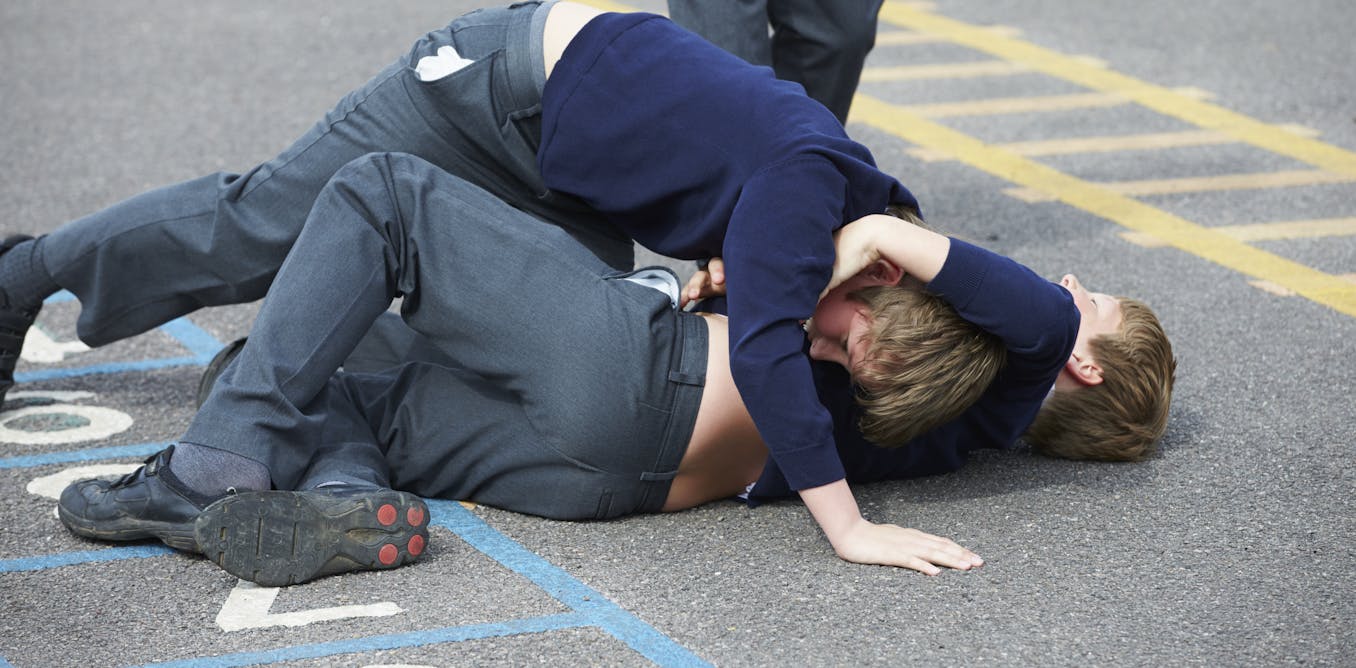Physical activity — primarily in the form of active play — promotes young children’s physical, mental, emotional and social health. It can also influence how active people will be later in life.
It’s recommended that pre-school children, aged three to four years, engage in at least three hours of physical activity per day, and that should include one hour of high-intensity, heart-pumping movement. Sedentary screen time should also be limited to less than one hour per day.
Despite this, many children in Canada and around the world do not meet recommended levels of physical activity and engage in far more sedentary screen time than recommended.
Early childhood educators (ECEs) play many important roles in helping young children grow and learn, and one of these roles is encouraging engagement in physical activity. Our research in the Child Health and Physical Activity Lab at Western University focuses on promoting physical activity of young children.
A large part of our research involves working with ECEs to create active child-care settings, where children are supported and encouraged to engage in the physical activity they need for their development. We believe providing physical activity training opportunities for ECEs is an essential first step towards reaching that goal.
Why kids aren’t moving
There are many barriers to promoting physical activity in child-care settings, including prioritization of academic outcomes and limited space or equipment.
For ECEs, the lack of formal training on the integral role of physical activity on children’s learning, health and development may present a key barrier.
Only 32 per cent of students in early childhood education programs in Canada have taken a course related to physical activity in their post-secondary degree.
Furthermore, ECEs across Canada have reported a lack of knowledge and confidence in their ability to incorporate physical activity opportunities into daily programming in child-care settings. This is the case even while ECEs have expressed interest in pursuing more training on these important subjects.
The TEACH course
We created the TEACH e-learning course (TEACH stands for Training EArly CHildhood educators in physical activity) to help bridge this gap.
This course aims to educate ECEs on the important role of physical activity in child development, and to provide them with the knowledge and confidence to implement physical activity within child-care environments.
The TEACH course was developed with both early childhood education experts and physical activity specialists to create comprehensive and relevant course content in four online modules. These include instructive videos, practical tips and “knowledge checks” (encouraging self-reflection on current knowledge and practices) for promoting physical activity and limiting sedentary behaviour in child-care environments.
THE CANADIAN PRESS/Darryl Dyck
Important topics like outdoor and risky play are also covered in the course. It strives to overcome some of the other barriers to physical activity promotion in child-care settings, including suggestions for incorporating movement with limited space or equipment, as well as how to combine physical activities with other important skills like literacy and numeracy.
The TEACH course is endorsed by the Canada Child Care Federation as a resource which can be used for practising ECEs to help fulfil their annual professional development activity requirements.
Real-world results show promise
The course has been tested with 200 practising ECEs and 300 ECE students across Canada, and has been shown to increase ECEs’ knowledge, confidence and intentions to incorporate physical activity during the child-care day.
Not only that, but the positive changes in self-efficacy and confidence were sustained up to three months after completing the training. This shows that the e-learning course can have a lasting impact.
Both practising ECEs and those in training benefited from the TEACH course. Practicing ECEs, who could immediately apply their new knowledge and skills to their everyday work, maintained these gains more effectively when compared to the ECEs still in training.
Expanding and integrating the TEACH course
The online format of the TEACH course increases accessibility of the course, as ECEs can work through the content in their own time, from anywhere. The online format also provides promise for the feasibility of expanding the course to a wider audience to be a cost-effective way to train a large number of ECEs, without much strain on resources.
Members of the Child Health and Physical Activity Lab have translated the TEACH course into French (TEACH-FR). They’re currently testing its impact on francophone ECEs across the country, to ensure this resource can eventually be made available to both English- and French-speaking ECEs across Canada.
Children’s engagement in physical activity and healthy movement while at child care matters — and can impact their health and development. The TEACH course can help improve educators’ knowledge and confidence in promoting physical activity opportunities in child-care settings, better equipping them for this challenge.
By providing training for ECEs on the importance of physical activity behaviours, as well as how to effectively program daily active play opportunities, we can help children to move more during their time in child care. This helps set the stage for future healthy active lives.

The post “Kids’ physical activity in child care is essential — how an online course equips educators to lead the way” by Myranda Hawthorne, PhD Student, Health and Rehabilitation Sciences, Western University was published on 04/06/2025 by theconversation.com






































Leave a Reply